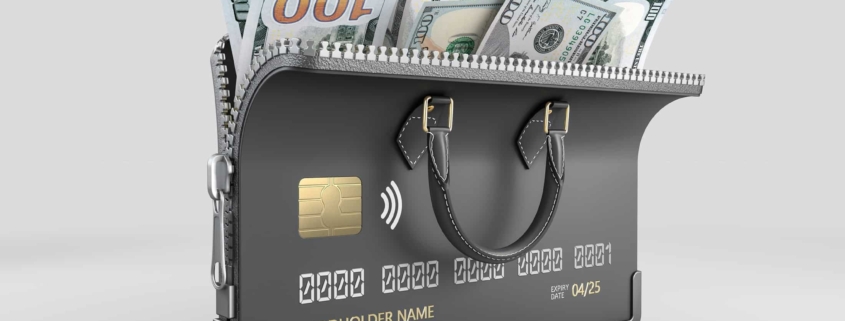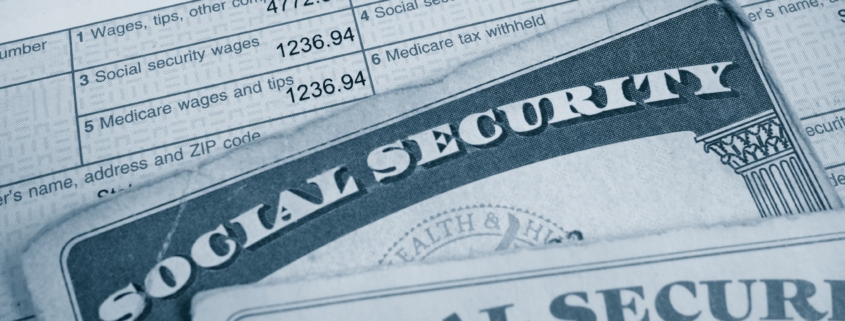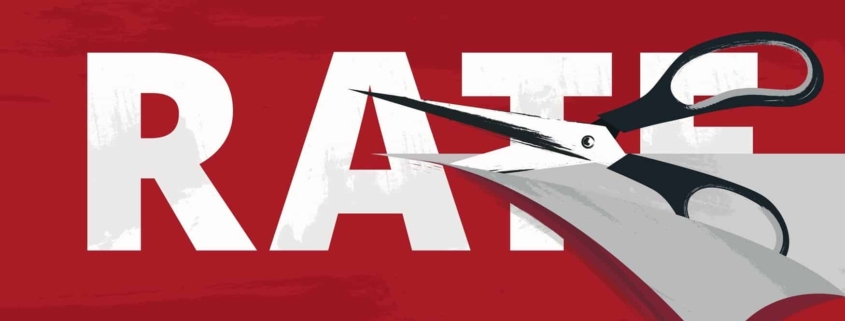Owning a restaurant can be rewarding, but often comes with financial challenges. Restaurants may experience irregular or seasonal revenue, while they must continue to make payroll, maintain equipment, and stock pantries, coolers, and bars.
Whether you’re launching a new restaurant concept, expanding an existing restaurant, or just need working capital to keep the bills paid when revenue fluctuates, a restaurant loan could be the answer. Restaurant loans can help restaurants grow and maintain operations without straining their finances.
What are Restaurant Business Loans?
A restaurant loan is a small business loan used by restaurant owners. The business loan provides financing that a restaurant business owner can use to support their restaurant operations. There are a variety of different ways that a restaurant loan can be structured, such as varying loan amounts and terms, depending on the needs of the restaurant and its owners.
How do Restaurant Business Loans Work?
Restaurant business loans work just like any other business loan – where the lender gives the restaurant owner a lump sum of money and the borrower will repay the loan with interest in agreed-upon monthly payments. These payments are fixed, making them easy to account for on a regular basis.
There are other types of financing that a restaurant owner could choose depending on their needs. For example, if the restaurant needs a dining room renovation, a lump-sum loan may be the right choice to purchase the equipment. But if the restaurant just needs available working capital to tap into when revenue is slow, another option, such as a business line of credit, may be the best option.
Restaurant Loan Benefits
A restaurant loan can offer a number of benefits for owners, including:
Cash flow flexibility
Most restaurants face unexpected expenses from time to time. Food prices may spike temporarily, or an oven or dishwasher may need a major repair or replacement. Rather than worrying about how you’ll have the cash flow flexibility to cover unexpected expenses, a restaurant loan can ease your mind and help you manage those costs.
Financing for growth
Business growth and expansion can become unmanageable if it occurs faster than you can finance it. Restaurant owners may use small business loans to help finance the growth of their business by purchasing new equipment, hiring and training more staff, buying additional inventory, leasing more space, or ramping up marketing. Loan financing may also pay for renovations to an existing space or equipment upgrades if needed to plan for future business growth.
Meet seasonal needs
In many cases, restaurants are seasonal businesses where the amount of revenue coming in fluctuates throughout the year. Restaurant owners may need extra funding to prepare for the upcoming season or to keep the bills paid during the slower seasons.
A restaurant loan could help with hiring and training seasonal staff, purchasing inventory, and creating seasonal advertising to prepare for the busiest time of the year. This funding may also help business owners during a slow season by covering costs to meet immediate needs.
Restaurant Loan Drawbacks
A restaurant loan can help you run your business smoothly, but it may also have drawbacks, such as:
Potential collateral requirements
Some restaurant loans require business owners to provide collateral to qualify for financing. That may mean securing the loan with funds in the business account, the restaurant’s building or food truck, or even the owner’s personal house, car, or retirement funds.
Consistent payments despite inconsistent revenue
Even though a restaurant’s revenue may be seasonal or inconsistent, payments on a restaurant loan must be made consistently. It’s important to plan how the payments will be made before taking out a loan.
Restaurant Loan Uses
A restaurant loan can be used for almost any expense a restaurant has, such as:
- Restaurant growth – A restaurant loan could fund one or more new locations or the expansion of a current restaurant location.
- Equipment purchases or repairs – Every restaurant needs equipment, but purchasing, maintaining, and repairing that equipment can be expensive. A restaurant loan can help cover the costs.
- Payroll and other regular expenses – A restaurant loan can make it possible to meet payroll obligations and cover other monthly bills when cash flow is tight.
- Food inventory – Stocking the restaurant pantry and freezer can be expensive. A restaurant loan can finance food costs so that your restaurant is ready to serve a crowd of customers.
Note that some business lenders will set stipulations for what the loan funds can be used for. Make sure that your planned purchases are approved before you accept a loan offer.
Types of Business Loans for Restaurants
There are a variety of different types of loans available for restaurant owners. The one that works best for you will depend on your specific needs.
Term Loan
With a small business term loan, a restaurant receives funding upfront and pays it back in installments — plus interest — over time. The loan must be paid back with regular payments within an agreed-upon term, such as one year, five years, or 10 years. Lenders may consider business and personal financial history and credit score for qualification
SBA Loan
An SBA loan is a flexible financing solution for a restaurant. Because a portion of an SBA loan is guaranteed by the U.S. Small Business Administration, lenders can typically provide these loans to borrowers with more favorable terms and interest rates than conventional loans. That may mean restaurant owners can take advantage of greater accessibility, lower down payments, and longer repayment terms than other financing options. However, SBA loans are difficult to qualify for and are not a viable option for every restaurant owner.
Restaurant Financing Alternatives
When a traditional loan isn’t the right fit for your restaurant, there are alternative types of financing that might work, including the following.
Line of Credit
A business line of credit for a restaurant allows access to a predetermined amount of funds whenever you need it, allowing you to only pay interest on the amount drawn from the total. The funds become available to borrow again as you pay down balances.
Business Credit Card
A business credit card works like a personal credit card, allowing a business owner to charge purchases up to a certain limit. Carrying your statement balance beyond the payment due date can incur interest charges. When the card has a balance, the business owner must make a monthly payment that includes both principal and interest owed.
Grants
Business grants are funds that are granted to a small business free of charge, with no need for repayment. Many different organizations offer small business grants, including government agencies, nonprofit organizations, and some large corporations. Typically, small businesses must complete an application and go through a competitive process to win a grant.
Equipment Financing
Equipment financing allows small business owners to purchase the equipment they need to keep their businesses moving ahead, without tapping into savings or working capital. Restaurants may be able to get a tax deduction when they use equipment financing, too, though you should connect with an accountant before filing your business taxes.
Invoice Factoring
If your restaurant provides catering or other services that involve invoicing customers, you could consider invoice factoring, which is a way of accessing capital by selling invoices to a third party. In return, the restaurant business would receive an advance based on a percentage of the total value of the invoices. In some cased, the third party factoring company may then assumes responsibility for collecting payments from the customers who owe the outstanding balances.
Crowdfunding
Many small businesses have accessed funding through crowdfunding on platforms like Kickstarter and gofundme. If your restaurant business has a unique or touching story that might attract the interest and support of a wide variety of individuals, crowdfunding may be a good option.
How to Get a Restaurant Loan
The specifics may vary based on the type of loan you want, but most restaurant loans require the following when applying:
- Personal and business credit scores
- Revenue of the business
- Length of time in business
- Size of the business
- Collateral (if required)
- Business Checking Account
- Previous year’s tax returns and/or bank statements
From there, you should compare multiple lenders and restaurant loan options to find the best fit for your business.
Where to Get a Restaurant Loan
Restaurant loans are usually offered by traditional banks, credit unions, and online lenders, each of which comes with benefits and drawbacks.
A traditional bank loan may come with lower rates, making it the most affordable option. However, banks often set strict eligibility requirements, and loan applications can take a while to process. Once approved, loan funds could take longer to disperse than other options.
Credit unions are excellent local resources for small businesses. They offer competitive rates and a more personalized service than many banks, though loan limits are typically lower than with banks. Credit unions can also have lengthy approval processes.
Online lenders provide a quick alternative to banks and credit unions. Application approval and fund dispersal can take a matter of days for some online lenders. Online lenders also offer flexible loan options, letting you find a restaurant loan that fits your business. However, many online lenders come with higher rates than banks or credit unions.
How to Choose a Restaurant Loan
To select the best restaurant loan for your situation, look for a lender that has experience working with restaurants. It’s also a good idea to compare lenders and rates and consider a variety of different products before choosing the one that works best for you.
When shopping around with different lenders, compare terms such as:
- How much you’ll be able to borrow
- How long you’ll have to repay a loan
- The interest rate and fees
- Collateral requirements
- Personal guarantee requirements
Restaurant Loan FAQs
Is it hard to get a restaurant loan?
Most restaurant owners have a wide variety of business loans that are now available to them, especially through online lenders. Eligibility for a loan comes down to personal and business credit scores, the business’s financial health, and collateral if needed.
Do banks lend to restaurants?
Some banks make loans to restaurants, depending on the restaurant’s length of time in business, performance record, and financials. Restaurants that are not able to get a loan from a bank have plenty of other options for raising capital with online lenders and nontraditional finance companies.
How big of a loan can you get for a restaurant?
The size of a restaurant loan will depend on the lender and the qualifications of the borrower. Some new restaurant owners might qualify for a loan of $50,000, while more experienced restaurant owners might qualify for a loan that is much larger. Check with lenders to see what your restaurant business qualifies for.









